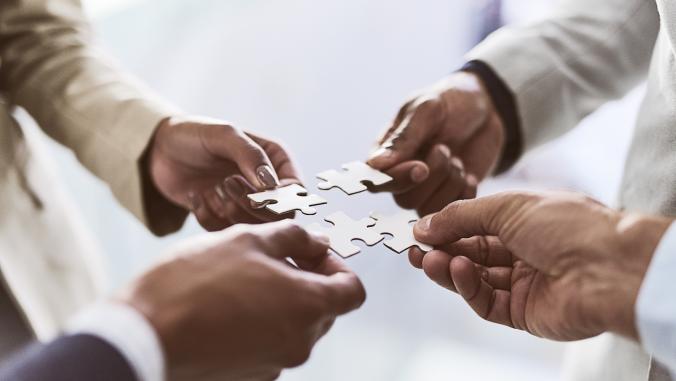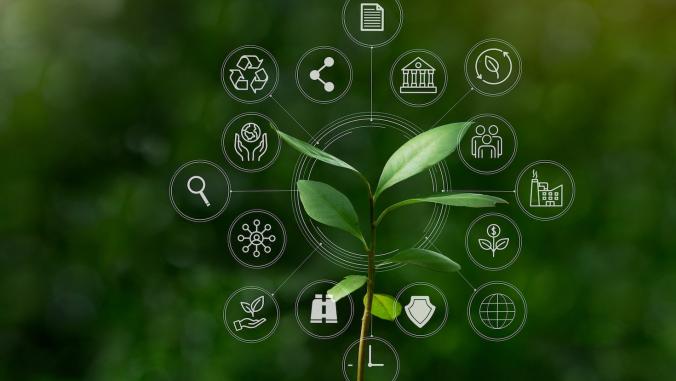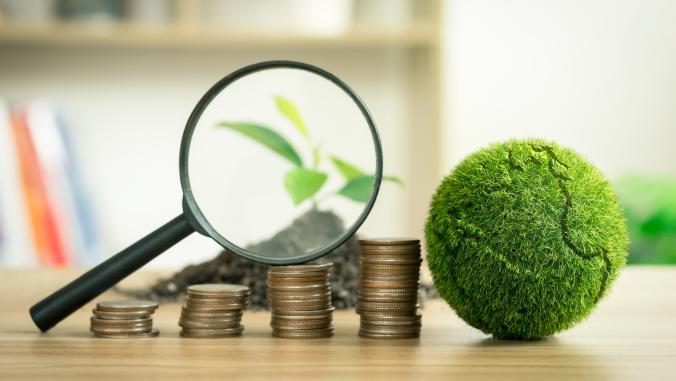6 trends driving businesses to double down on sustainability
With progress on issues such as deforestation accelerating — thanks to new policies from the likes of Staples, Breyers and Avery Denison — what will it take to realize truly transformative sustainability?

Sustainability is already significantly affecting many markets. But environmental and social issues are also poised to keep moving much higher up the list of business priorities.
At a sustainability Leadership Summit held by the Rainforest Alliance this month in New York, business, government and NGO leaders discussed the rapid evolution of their work in sustainability. Many said the field is actually entering a new phase defined by deeper engagement on relevant issues.
“Meaningful brands” that integrate sustainability outperform the stock market by 133 percent. And by now, nearly half of Americans recognize the Rainforest Alliance seal. A full 15 percent of the world’s tea and nearly 14 percent of cocoa is grown on Rainforest Alliance Certified farms. Our work has put nearly 130 million acres of forest and farmland under sustainable management in 77 countries.
But that’s small potatoes compared to where sustainability is headed.

More broadly, signatories to the New York Declaration on Forests and the Consumer Goods Forum are pledging to cut deforestation out of their supply chains by 2020, with many other companies making similar “deforestation-free” declarations.
The spike in sustainability ambition coincides with the runup to COP21 in Paris.
“Let’s seize this opportunity to capture the imaginations of politicians,” Naoko Ishii, president of the Global Environment Fund, told Rainforest Alliance meeting attendees. “The challenges remain huge, but we can achieve transformational change and take sustainability to the next level.”
But what will really get us there? Summit participants described a tipping point where sustainability is breaking out of its silos, cutting across different sectors and integrating diverse goals.
Here are a few of of the trends they cited:
1. Shifting consumer attitudes
Social and environmental values are merging with consumer attitudes, product design and innovation, shifting the consumer’s sustainability focus “from obligation to desire,” said Raphael Bemporad of BBMG, a brand consultancy which tracked the trend for four years.
It’s being fueled by the demographic rise of “Aspirationals,” cultural influencers who help shape new norms, and demand quality along with functionality, beauty and sustainability or a sense of responsibility. They’re mostly Millennials or GenX, educated and female (54 percent).
They’re a powerful force in emerging economies (over 50 percent of consumers in India and over 40 percent in China), and around the world (more than 40 percent of consumers in Canada and Peru, more than 30 percent in the U.S.).
2. Breaking down departmental silos
“For too long, sustainability has been siloed,” said Bemporad. It was relegated to tracking resource use or tracing supply chains, and little considered in marketing and leadership decisions.
Yet it’s mission-critical to design, marketing, branding and leading.
“The language of limited resources doesn’t inspire marketers. Brand equity and loyalty does,” said Sally Uren of Forum for the Future. “Sustainability can’t be limited to counting CO2 emissions or waste reduction. It’s many things — risk management, straight marketing. Sustainability KPIs should be integrated with companywide goals.”
3. Assuring quality and supply
Many businesses embark on sustainability because they need reliable supply of high-quality commodities, which may be vulnerable to disruption.
“To get sustainability, we focus on high quality and consistency,” said Daniel Weston of Nespresso, which sources 84 percent of its coffee through its AAA Sustainable Quality program.
In Rwanda and Burundi, too, the program is raising yields, eradicating child labor and building climate resilience while delivering quality and consistency in supply.
To create the flavor consumers expect, Breyers Ice Cream sources high-quality Rainforest Alliance Certified vanilla from Madagascar. Vanilla needs rainforests to grow, and in Madagascar, where poverty is widespread, farmers hand-pollenate every flower — meaning that both environmental and social sustainability are key.
“Without our partnership with Rainforest Alliance and these farmers, we couldn’t supply the vanilla at all,” said Breyers’ Nicholas Soukas.
4. Integrating diverse environmental and social goals
“Deforestation-free declarations aren’t enough,” said Michael Garcia of the pulp and paper giant Domtar. “You need sustainable supply chains.”
At the summit, we announced a new joint initiative with Domtar, Avery Dennison, Columbia Forest Products and Staples to work with family forest owners to strengthen sustainable forest management and cultivate sustainable supply in the southeastern U.S.
But implementing a topline sustainability goal such as going “deforestation-free” depends on many other interconnected factors, such as clean water and non-forest ecosystems, and social and economic conditions that don’t fuel illegal logging.
Agriculture drives deforestation, so protecting forests also requires raising yields sustainably on existing cropland and pasture, meeting rising food demand and improving livelihoods without clearing more forest.
That requires better soil health, pest management, climate resilience, etc. Smallholders need to learn financial literacy skills so they qualify for loans and can make and track the necessary improvements.
None of this happens without social engagement, respecting the concerns and rights of workers and communities.
Marcelo Strufaldi Castelli, CEO of Brazilian hardwood pulp producer Fibria, described it as a prerequisite, a “social license to operate.”
“We had to move from a shareholder point of view to a stakeholder point of view,” he said.
“We operate in Bangladesh, Sri Lanka, Indonesia and Pakistan,” said Dean Scarborough, CEO of the labeling and packaging company Avery Dennison. “Our social sustainability work helped us get recognized in emerging markets.”
5. Increasing government engagement
Under Environmental Minister Marina Silva’s leadership, Brazil managed to cut deforestation by 90 percent in just five years.
“We converted good ideas that were out there into concrete policies,” Silva told the New York summit, “including from companies, communities and NGOs.”
Brazil’s cattle sector made a huge contribution by cutting its deforestation 50 percent. Costa Rica’s government made 25 percent of its land protected area to fight deforestation, and sought creative ways to make it productive, because the land wouldn’t be used for agriculture.
It instituted payments to landowners for environmental services, financed by a gasoline tax and even bonds it sold on the New York Stock Exchange. It pioneered sustainable tourism certification, partnering with NGOs including the Rainforest Alliance to train tourism businesses and tour operators. It now gets 2.5 million visitors a year.
“We’ve shown it can be profitable to protect land,” said Gina Guillen of Costa Rica’s U.N. Mission.
But replicating success stories such as these requires more government engagement to speed the pace of change.
6. Revolutionizing communications
Rapid change in communications is intensifying the focus on sustainability key ways.
Last year the Guardian and Rainforest Alliance launched “Vital Signs,” a joint platform about sustainability, climate change and the role of responsible business in society, with content from Avery Dennison, Chiquita and Domtar — the first time multiple brands came together around such an effort.
“We found the platform got huge engagement from consumers, not just from economists and academics,” said the Guardian’s Charlie Wilkie.
Engagement shot up worldwide, and the companies’ reputations grew 166 percent. As reputation can be gained or lost through peer-to-peer communications online, it’s indispensible to have sustainable practices in place and communicate them to consumers.
Producers, too, are increasingly wired, even in remote areas, creating opportunities for peer-to-peer learning about sustainable practices, and for understanding how they affect markets and consumers.
We’re working to network farmers and foresters with companies and consumers, offering sharable content such as training videos and incentive programs such as free cell phone minutes for uploading content.
These trends are all converging and fueling a more comprehensive, scaled-up pursuit of sustainability, not just as a way to manage risk or gain incremental market share, but as a central aspect of economic activity coming into sharp focus.
Silva expressed it this way: “Sustainability is not just a way to generate energy or extract resources; it’s a way of being, an idea of life, a way of seeing the world now and for the future.”





